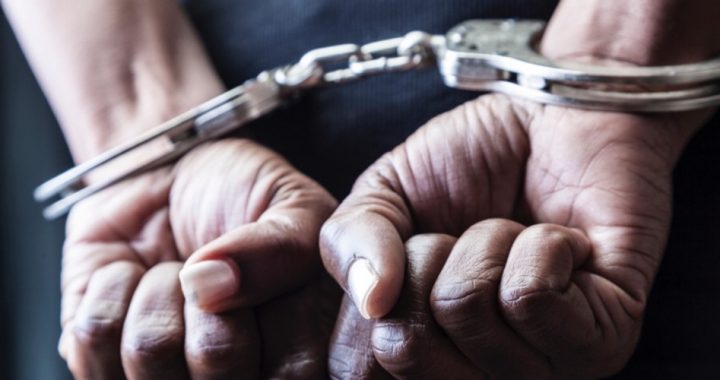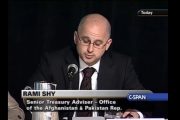
In the wake of the officer-involved shooting death of Stephon Clark in Sacramento last month, some California legislators are seeking to change the law regarding when officers can use deadly force. The bill would also make it easier to prosecute officer-involved shooting cases.
Almost as soon as Clark was shot by two Sacramento police officers on March 18, the protests and claims of racial injustice began. Clark was a 22-year old black man. While the department did not initially release any information on the officers due to death threats made against them, it has been widely reported that they are Officer Terrence Mercadal and Officer Jared Robinet. Robinet is white, but Mercadal is black.
As a result of public backlash and claims that the shooting was racially motivated (despite one officer being black himself and no evidence to support claims of racism), several California lawmakers have introduced a bill to change the standard required for officers to use lethal force. The current standard is “reasonable force.” If the bill were to become law, that standard would change to “necessary force.” According to Lizzie Buchen, a legislative advocate for the American Civil Liberties Union (ACLU) which is one organization behind this bill, this would mean that officers could fire their weapons only if “there were no other reasonable alternatives to the use of deadly force” to prevent imminent serious injury or death.
The average person can be forgiven if that sounds a lot like “reasonable force” and if this bill seems like a pandering attempt on the part of the liberal legislature to “solve” a problem it has not actually identified by changing the language of the law. Because, to put in the for-what-it’s-worth column, a “necessary force” law would not have prevented Clark from being shot. Perhaps it would have opened the officers up to a greater possibility of prosecution, but only because in perfect 20/20 hindsight, someone might claim that the officers could “reasonably” have just not chased a fleeing criminal — but then, they would have been derelict in their duty.
As The Mercury News reported:
The goal is to encourage officers to try to defuse confrontations or use less deadly weapons, said Terry Schanz, a spokesman for Democratic Assemblyman Kevin McCarty of Sacramento, who is co-authoring the legislation with Assemblywoman Shirley Weber, a San Diego Democrat.
Some in law enforcement called the proposal “irresponsible and unworkable.”
Officers already use deadly force only when necessary and are taught to try to defuse dangerous situations first when possible, said Ed Obayashi, a Plumas County sheriff’s deputy and special prosecutor who trains officers and testifies in court on police use of force.
Tinkering with legal protections for police could make it more difficult to hire officers and is dangerous because they may hesitate when confronting an armed suspect, threatening themselves and bystanders, Obayashi said.
While this is still a developing story and there are many more questions than answers, some things are known for certain. And despite fake news reports and the claims of the Black Lives Matter (BLM) crowd and even some legislators, one thing that is known for certain is that SPD never claimed that Clark was carrying a “tool bar” or that he had a gun. In fact, Police Chief Daniel Hahn told Capital Public Radio in an interview, “We never said he had a gun. We never said he had a tool bar.” His claim is backed up by the official statement issued by SPD immediately after the shooting. The officers at the scene thought Clark had a gun at the moment they shot him, but the department never made that claim. A mobile phone in a black case was recovered at the scene.
And in the interest of disclosure, the Sacramento Police Department (SPD) has released not only the body camera videos of both officers involved (here and here), but also the video taken from the Sacramento County Sheriff’s Department helicopter that assisted in the search. The audio of the 911 call and the dispatch radio call have also been released. Those video and audio releases allow a few other things to be known for certain.
The 911 call is from a resident of the neighborhood who called to report that the windows of his truck and the windows of a car across the street from him had been smashed by someone wearing a hoodie and pants with some type of white dot or stripe pattern. The caller tells the 911 operator that when he armed himself with a baseball bat and confronted the man, he ran into a neighbor’s back yard and was trying to get over the fence into another yard.
The body camera videos show officers pursuing Clark into the back yard of his grandmother’s home. They can be heard repeatedly and loudly ordering Clark to stop and show his hands. In the helicopter video (which uses heat registering technology) the officers and Clark are illuminated and show as bright white. Clark is shown running into the yard and away from the officers before he turns and advances toward them.
If one takes the time to sync the timing of the body camera videos to the helicopter video (as this writer has done), here is what can be seen:
As the officers chase Clark into the back yard, they come into the open as they pass the northwest corner of the house which Clark has already passed. One officer can be seen immediately retreating to the cover of the corner of the house and pulling his partner back with him. At this moment, the officers — who have already ordered Clark to stop and show his hands at least twice — again issue those commands. Clark can clearly be seen advancing toward the officers. One officer issues the command yet again, immediately followed by “Gun! Gun! Gun!” Then the officers, with what they have every reasonable expectation to believe is an armed man closing the distance between himself and them, fire at Clark until he no longer poses a threat of imminent serious injury or death.
From the moment the officers take cover behind the corner of the house until they fire their first shots is less than four seconds.
It is also noteworthy that the video shows that Clark ran from the area where the 911 caller said the person who was smashing windows was hiding. He was also dressed exactly as the caller described him. So, while friends, family, BLM, and legislators paint a picture of Clark as a law-abiding, good citizen who was summarily executed by bad cops for the “crime” of being black, it just doesn’t wash. Clark appears to have been a criminal who refused to obey reasonable and lawful orders to stop and show his hands. He made the decisions he made and the officers made their decisions in response.
He had plenty of time to act; they had four seconds to react.
So, these two officers — these two human persons — have a mere four seconds to make a decision with life and death hanging in the balance as a criminal with something black in his hand continues to advance on them despite their repeated orders to stop and show his hands.
And while liberals line up to tar and feather these officers — these human persons — for making the decision they did, the reality is that the ability to make decisions is what society needs in good police officers. The human element is what makes policing work in the first place. After all, police officers are — first and foremost — human persons who risk life and limb to protect other human persons.
One is left to wonder what any of the legislators pushing this bill or their ACLU handlers would have done in those four seconds. Likely, they would have learned the same lesson an anti-cop civil rights leader in Phoenix learned in 2015. Only they would not have been fortunate enough to have it be a training session they could walk away from after learning that lesson.
A “necessary force” law would remove — or penalize — the human element. It would require that officers are able to weigh every possible contingency and — with clairvoyant perfection — predict which one is the “necessary” one.
This writer consulted with retired Henrico, Virginia, Police Sergeant John Slater for this article.
Photo: Bill Oxford/E+/Getty Images





